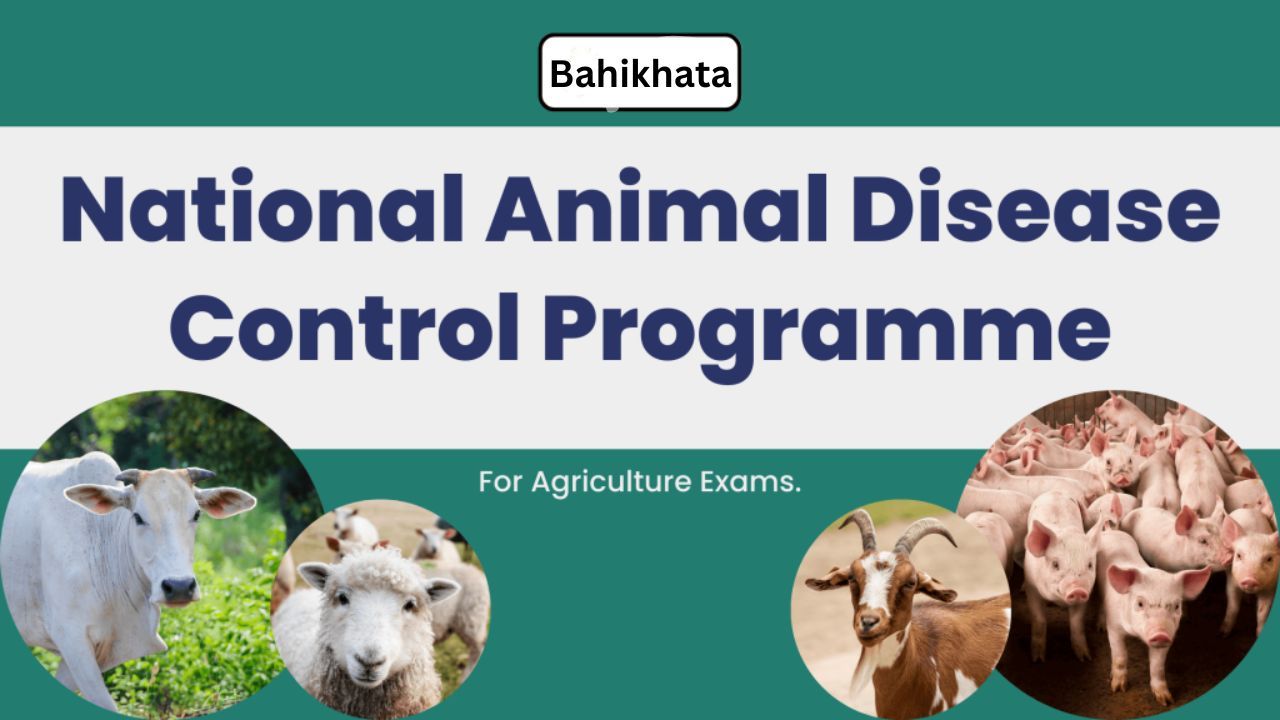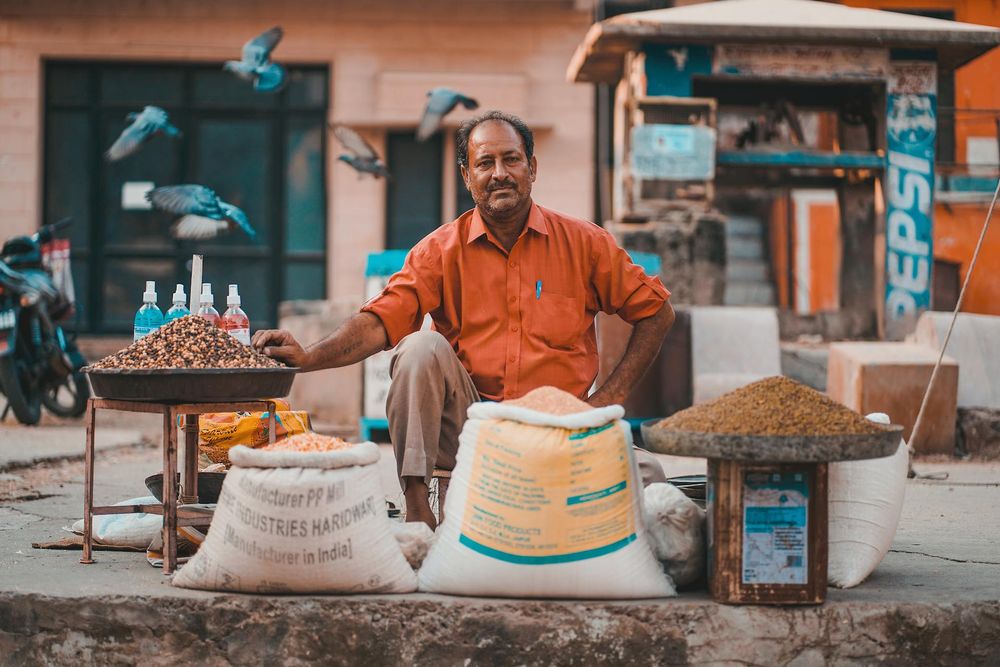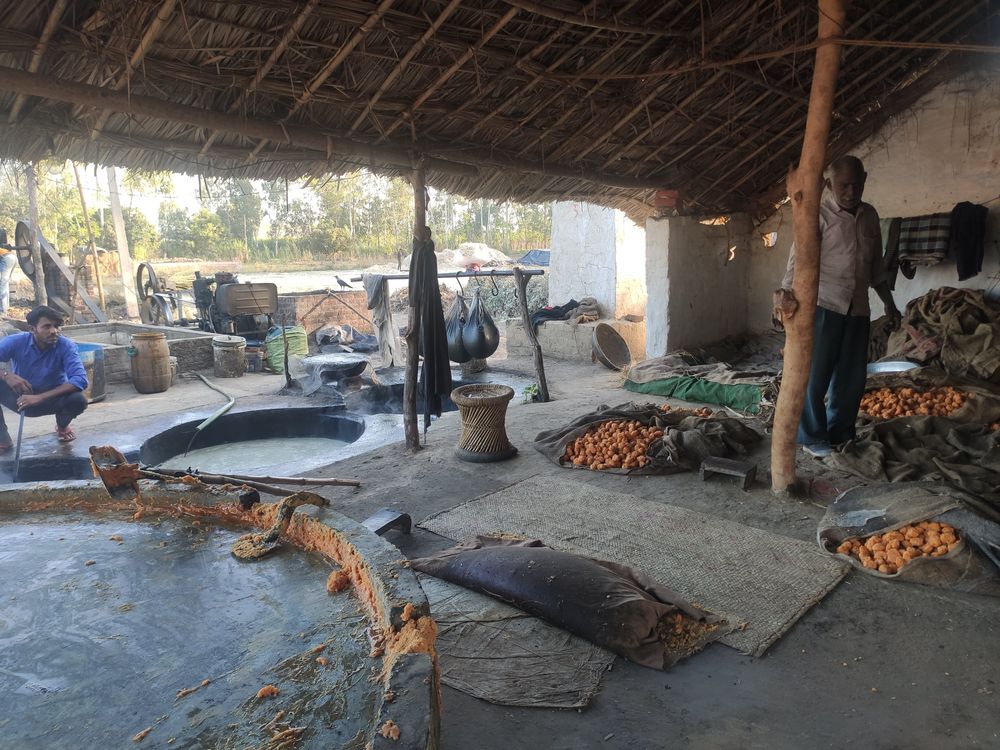About the Scheme:
- The National Animal Disease Control Programme (NADCP) stands as a pivotal initiative aimed at fortifying the health of livestock across the nation. It is a testament to the commitment of safeguarding the well-being of animals that are integral to the agricultural and economic landscape of India. Launched with a vision to combat various diseases affecting livestock, the NADCP operates with meticulous planning and execution strategies to mitigate the adverse impacts of prevalent diseases like Foot and Mouth Disease (FMD) and Brucellosis.
Foot and Mouth Disease (FMD):

- Foot and Mouth Disease (FMD) stands as one of the most formidable challenges faced by livestock keepers globally. This highly contagious viral disease affects cloven-hoofed animals, including cattle, pigs, sheep, and goats. The disease not only inflicts immense suffering upon the animals but also poses a significant economic threat due to reduced productivity, trade restrictions, and substantial costs incurred in disease control measures. FMD spreads rapidly through direct contact between animals, contaminated equipment, or even through the air, making it exceptionally difficult to contain.
Brucellosis:

- Brucellosis, often referred to as undulant fever or Malta fever, is another debilitating disease that plagues the livestock population. Caused by bacteria of the genus Brucella, it primarily affects cattle, buffalo, sheep, goats, pigs, and dogs. Brucellosis not only leads to reduced milk production and fertility in animals but also poses a significant zoonotic risk, threatening human health. The disease can be transmitted to humans through the consumption of unpasteurized dairy products or direct contact with infected animals, resulting in flu-like symptoms and long-term health complications if left untreated.
Objectives of the Programme:

The National Animal Disease Control Programme (NADCP) is driven by a set of comprehensive objectives aimed at curbing the prevalence and spread of diseases like FMD and Brucellosis. These objectives encompass:
- Disease Surveillance and Monitoring: Implementing robust surveillance mechanisms to track the incidence and prevalence of FMD and Brucellosis, thereby facilitating timely intervention strategies.
- Vaccination Campaigns: Conducting widespread vaccination campaigns to immunize livestock against FMD and Brucellosis, thereby reducing disease burden and transmission rates.
- Capacity Building: Enhancing the capacity of veterinary personnel and livestock farmers through training programs, workshops, and educational initiatives aimed at disease prevention and control.
- Public Awareness and Engagement: Engaging with stakeholders at various levels to raise awareness about the importance of vaccination, biosecurity measures, and disease management practices.
- Research and Innovation: Supporting research endeavors aimed at developing innovative tools, technologies, and strategies for the prevention and control of FMD, Brucellosis, and other livestock diseases.
Major Activities under NADCP for FMD and Brucellosis:
Under the National Animal Disease Control Programme (NADCP), a series of targeted activities are undertaken to combat the menace of Foot and Mouth Disease (FMD) and Brucellosis. These activities encompass a spectrum of interventions designed to tackle the diseases comprehensively:
- Vaccination Drives: NADCP orchestrates large-scale vaccination drives across the country to immunize livestock against FMD and Brucellosis. These campaigns are meticulously planned and executed to ensure maximum coverage and efficacy.
- Disease Surveillance: Rigorous surveillance efforts are undertaken to monitor the prevalence and spread of FMD and Brucellosis. This involves regular screening of livestock populations, diagnostic testing, and data analysis to inform targeted intervention strategies.
- Biosecurity Measures: Emphasis is placed on implementing biosecurity measures at livestock farms and markets to prevent the introduction and spread of FMD and Brucellosis. This includes protocols for quarantine, disinfection, and control of animal movement.
- Capacity Building Initiatives: Training programs and capacity-building initiatives are organized for veterinary professionals, para-veterinary staff, and livestock farmers to enhance their knowledge and skills in disease prevention, diagnosis, and control.
- Community Engagement: NADCP actively engages with livestock keepers, community leaders, and other stakeholders to foster community participation in disease control efforts. This involves awareness campaigns, community meetings, and the dissemination of educational materials.
- Research and Development: NADCP collaborates with research institutions and academia to support research projects aimed at improving vaccines, diagnostic tools, and disease management strategies for FMD and Brucellosis.
Mass vaccination against Foot and Mouth Disease (FMD) targeting the entire susceptible population of bovines, small ruminants (sheep and goats), and pigs conducted every six months.
- Primary vaccination of bovine calves aged 4-5 months.
- Deworming administered one month prior to vaccination to enhance vaccine efficacy.
- Publicity and mass awareness campaigns executed at national, state, block, and village levels, including orientation of state functionaries for effective implementation of the programme.
- Identification of target animals through ear-tagging, registration, and uploading of data in the animal health module of the Information Network for Animal Productivity and Health (INAPH).
- Maintenance of vaccination records through Animal Health cards to track the vaccination status of each animal.
- Serosurveillance and seromonitoring of the animal population to monitor disease prevalence and vaccine effectiveness.
- Procurement of cold cabinets, ice liners, refrigerators, and FMD vaccine to ensure proper storage and availability of vaccines.
- Investigation, virus isolation, and typing in case of disease outbreaks to identify the strain and implement appropriate control measures.
- Regulation of animal movement through temporary quarantine/checkpoints to prevent disease spread.
- Testing of pre-vaccination and post-vaccination samples to assess vaccine efficacy and disease prevalence.
- Generation of data and regular monitoring, including the evaluation of the programme's impact on disease prevalence and livestock health.
- Providing remuneration to vaccinators, ensuring fair compensation not less than Rs.3/- per vaccination dose and Rs.2/- per animal for ear-tagging, including animal data entry.
Conclusion:
- In conclusion, the National Animal Disease Control Programme (NADCP) stands as a beacon of hope in the fight against debilitating diseases like Foot and Mouth Disease (FMD) and Brucellosis that afflict the livestock population. With its comprehensive approach encompassing vaccination campaigns, disease surveillance, capacity building, and community engagement, NADCP strives to safeguard the health and well-being of livestock while bolstering the agricultural economy of the nation. However, the battle against FMD, Brucellosis, and other livestock diseases remains ongoing, underscoring the need for sustained commitment, collaboration, and innovation in disease prevention and control efforts. Through collective action and unwavering dedication, NADCP continues to make significant strides towards a future where livestock are protected from the scourge of disease, ensuring prosperity and resilience for farmers and communities alike.
FAQs:
When was the National Animal Disease Control Programme launched?
- The National Animal Disease Control Programme was launched by Prime Minister Narendra Modi on 11th September 2019.
What is the National livestock health and disease Control Programme?
- The Livestock Health & Disease Control scheme aims to enhance the animal health sector through prophylactic vaccination programs against diseases of livestock and poultry, capacity building, disease surveillance, and the reinforcement of veterinary infrastructure.
What is the FMD vaccine in India?
- The Foot and Mouth Disease vaccine for animals contains mineral oil as an adjuvant and Thiomersal (0.02% w/v) as a preservative. It is available in either single emulsion (Water-in-Oil, W/O) or double emulsion (Water-in-Oil-in-Water, W/O/W) formulation based on customer requirements.
What is the National Animal Disease Control Programme PIB?
- The Government of India implements the Livestock Health and Disease Control Programme (LHDCP) nationwide to mitigate risks to animal health through prophylactic vaccination against diseases, bolstering veterinary services' capacity, conducting disease surveillance, and fortifying veterinary infrastructure.
What is the Animal Diseases Act in India?
- The Prevention and Control of Infectious and Contagious Diseases in Animals Act 2009 aims to regulate the prevention and control of infectious and contagious diseases in animals in India. It provides details about the Act's objectives, its short title, commencement, and extent.
We hope that you like this content and for more such content Please follow us on our social site and YouTube and subscribe to our website.
Manage your business cash flows and payable/receivables using our Bahi Khata App


